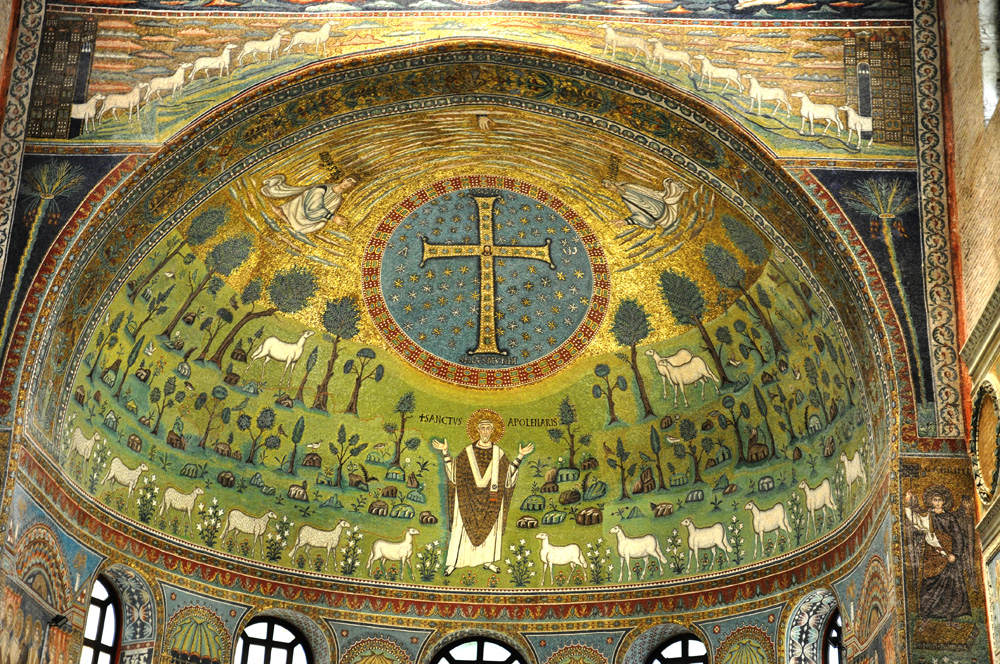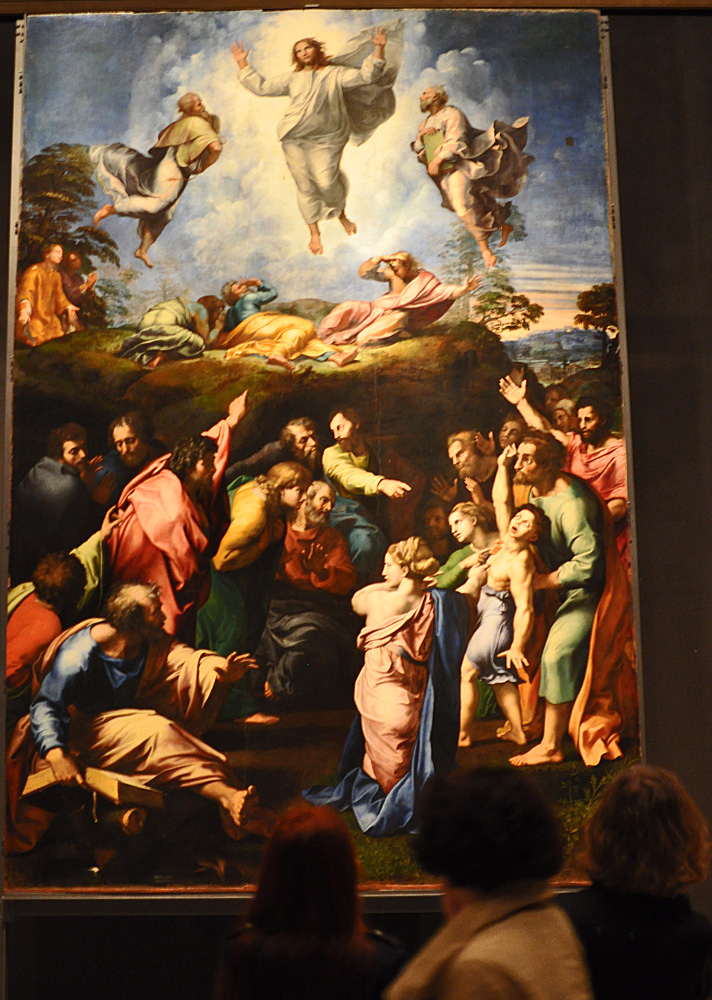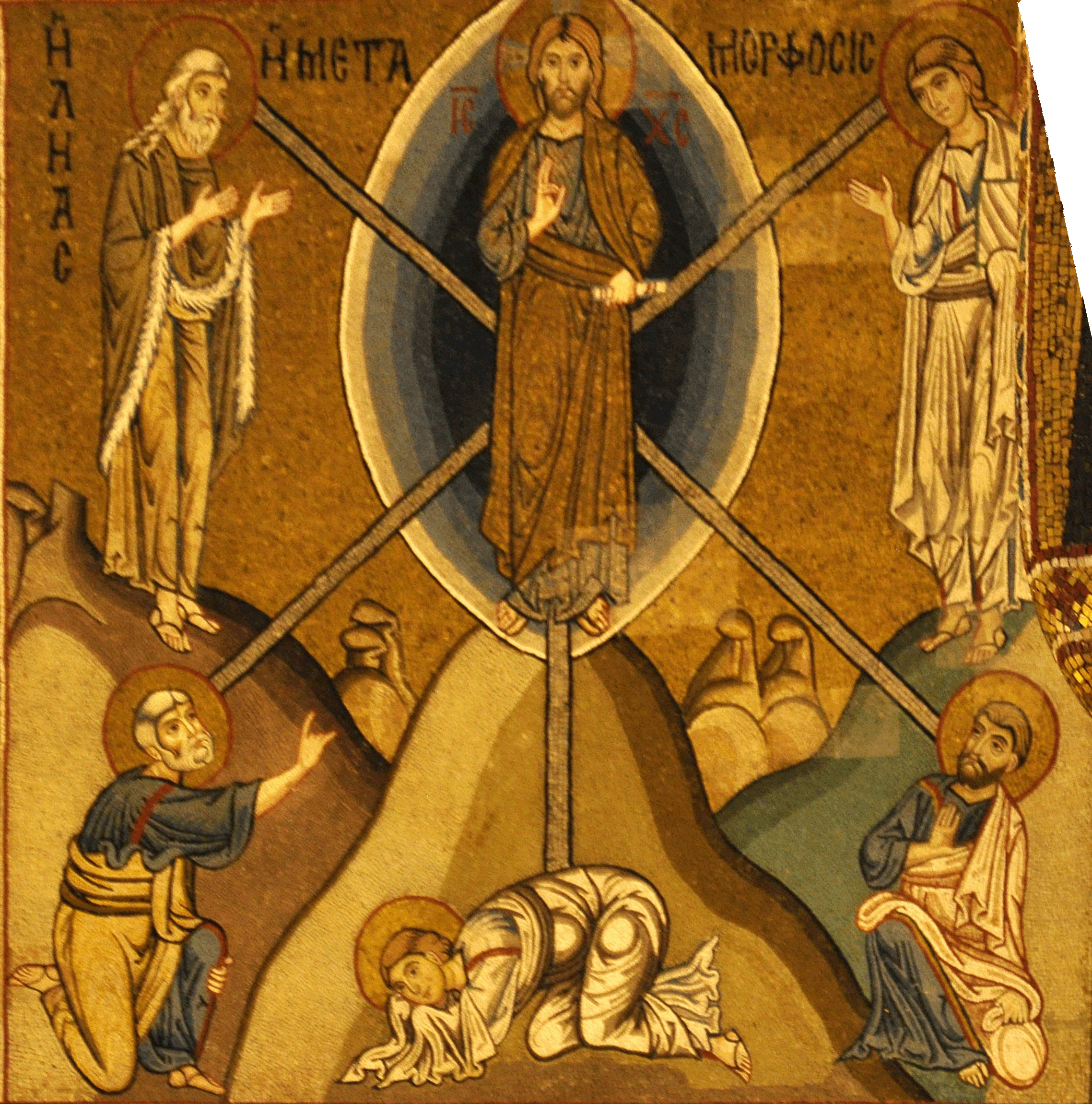The mandorla and the broad "light rays" emanating from Jesus in this mosaic are details that go back to the earliest known Transfiguration image in St. Catherine's monastery on Mount Sinai (6th century). They also appear in a 12th-century fresco in Le Puy also from the 12th. In most Western Transfigurations after the 12th century the artists do without the rays and content themselves with a literal representation of the Gospel story (example). Usually, the artist will try to cover some or all of the four responses recorded in the various gospels: awakening from sleep (Luke 9:32), seeing his glory (ibid.), reacting in fear (Mark 9:5), and falling on their face (Matthew 17:6) – example.
But two famous Transfigurations go well beyond the literal. The most unusual is this mosaic at Sant'Apollinare in Classe, Ravenna:

The other famous Transfiguration is Raphael's in the Pinacoteca Vaticana:

Prepared in 2016 by Richard Stracke, Emeritus Professor of English, Augusta University
Transfiguration mosaic in the Palatine Chapel, Palermo. See the description page for discussion.
MATTHEW 17:1-8: And after six days Jesus taketh unto him Peter and James, and John his brother, and bringeth them up into a high mountain apart: And he was transfigured before them. And his face did shine as the sun: and his garments became white as snow. And behold there appeared to them Moses and Elias talking with him. And Peter answering, said to Jesus: Lord, it is good for us to be here: if thou wilt, let us make here three tabernacles, one for thee, and one for Moses, and one for Elias. And as he was yet speaking, behold a bright cloud overshadowed them. And lo, a voice out of the cloud, saying: This is my beloved Son, in whom I am well pleased: hear ye him. And the disciples hearing, fell upon their face, and were very much afraid. And Jesus came and touched them: and said to them, Arise, and fear not. And they lifting up their eyes saw no one but only Jesus. And as they came down from the mountain, Jesus charged them, saying: Tell the vision to no man, till the Son of man be risen from the dead.
(Also see Mark 9:2-8 and Luke 9:28-36.)
MORE IMAGES
- 1770-79: The Transfiguration is pictured in an elaborate altarpiece in Seville.
- 1683: Villalpando's grand canvas, Moses and the Brazen Serpent and the Transfiguration of Jesus, relates the bronze serpent of Numbers 21 to the Crucifixion and both those episodes to the Transfiguration.
DATES
- August 6 is the Feast of the Transfiguration. For Orthodox churches that use the Julian Calendar, August 6 falls on August 19 of the Gregorian Calendar.
